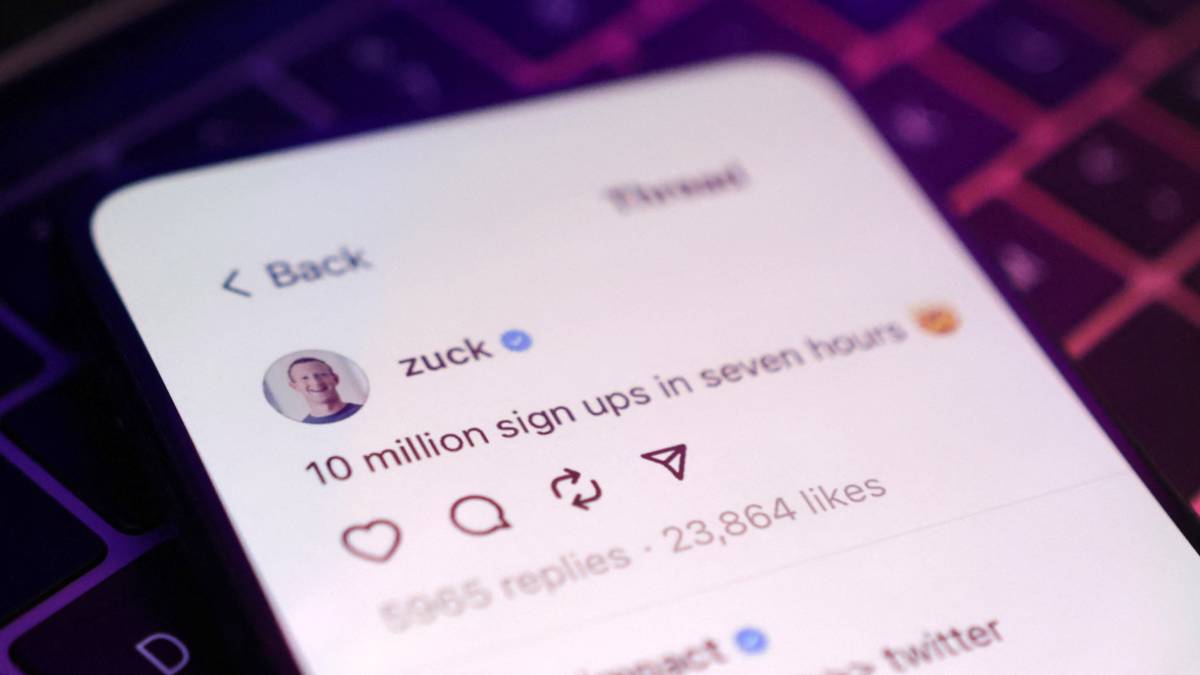More than 100 million downloads for Threads in less than a week. A record. More than ChatGPT.
Mark Zuckerberg is amazed. Elon Musk is scared. My educator wife, who moonlights as a domestic media critic, is even paying attention.
Wow.
Then, why is the early success of Threads seem so manufactured, so stat-drivenly false?
Because it is. At least if you’re interested in news.
Sitting on the couch after a tough day on Cape Cod, my wife asked if I was on Threads. I said yes, and she quickly followed with, “What do you think?”
She didn’t ask with absolute curiosity. It was a leading question. She wanted to give her thoughts. Someone with 51 Twitter followers and 1,284 opinions. You know, influencer territory.
“I like it because I don’t like what Musk is doing to Twitter,” she said. “I don’t want to support that anymore.”
The former comment totally resonates. Twitter has become more difficult to separate fact from fiction. Feeds are packed with ads and unrelated material. Musk often appears petty and over-sensitive, and with the way his site has been working, some of his “tweets” go viral even when they’re fake. Musk doesn’t seem to mind because it’s more “engagement”.
It’s the latter part of my wife’s comments that is troubling — about not wanting to be a part of Musk’s universe.
My wife isn’t alone.
Of the 100 million, many have experimented with Threads because they want an alternative to the product that Musk has helped shape at Twitter.
And that feels political.
And that feels like a problem.
If the surge of hate speech, disinformation, and fake accounts has forced certain people somewhere else, and that somewhere else is Threads, all we are doing is creating a new set of silos.
Think about it. A few million people leave Twitter because they don’t like Musk, his politics, or where the platform is trending. Millions stay because they like Musk, his politics, and where the platform is trending. Pretty soon you have two user sets that don’t have much crossover communication and become homogeneous groups that only see what they want to see – or at least what’s right in front of them.
That’s one issue. The other issue is actual news.
Twitter was formed organically. Through a span of a few years, along with word of mouth and exposure, it was a way for information, images, and video to transfer to a mass audience in real-time. On any given news story, whether it be an earthquake, terrorist attack, or hot dog eating contest, Twitter became the place to go because there were non-corporate entities, on the ground, turning around scenes right in front of them.
Most people on Threads are already on Instagram, Facebook, and even Twitter. Many of the posts are simply re-posting content from somewhere else. A lot of the 100 million users in a week’s time were prompted to join — just go over from Instagram, and you can basically port over your entire following.
Where’s the organic growth? Where’s the street-view information? Where’s the grit?
It’s not there.
And it’s not coming.
It feels like Twitter is the news, and Threads is the press release.
Find something edgy, something unique, something you either find only on Threads or at least see first on Threads.
You won’t.
“It’s less toxic, but still very much a Beta product,” media watcher and educator Andrew Everett told me.
“Threads negatives are: Privacy is nil. Meta just sucking up info. You can’t delete an account without also deleting Instagram. Feed is all algorithm. No chronological. No real search option.
“But big posters say engagement is way higher.”
Advertisers will like that, but news junkies maybe not so much.
“Twitter was way better for our Vermont disaster,” said Everett who lives in the Green Mountain State. “Threads wasn’t really helpful.”
Adding hashtags and trends will undoubtedly show the ebbs and flows of what’s happening on the site, but if it’s not getting input from people watching or doing certain relevant things, that addition may not even matter.
This dynamic only reinforces the sense that a true competitor to Twitter for news isn’t anywhere yet.
Will it be Mastodon? Spill or Bluesky? No clue. But it’s not Threads, even though it’s less than 150 million users away from Twitter – and much closer when considering users who are actually active. Early returns are that it will be a place where you can get celebrity stuff, articles from news outlets, and just about everything in between … except for hard, legitimate breaking news.
This theory will be tested with the next major story, and I will be watching both so you don’t have to; and yes, this is time-stamped which is a risk. So let’s check back in six months or a year, and see how this chunk of verbal cheese ages.

Brian Shactman is a weekly columnist for Barrett News Radio. In addition to writing for BNM, Brian can be heard weekday mornings in Hartford, CT on 1080 WTIC hosting the popular morning program ‘Brian & Company’. During his career, Brian has worked for ESPN, CNBC, MSNBC, and local TV channels in Connecticut and Massachusetts. You can find him on Twitter @bshactman.







